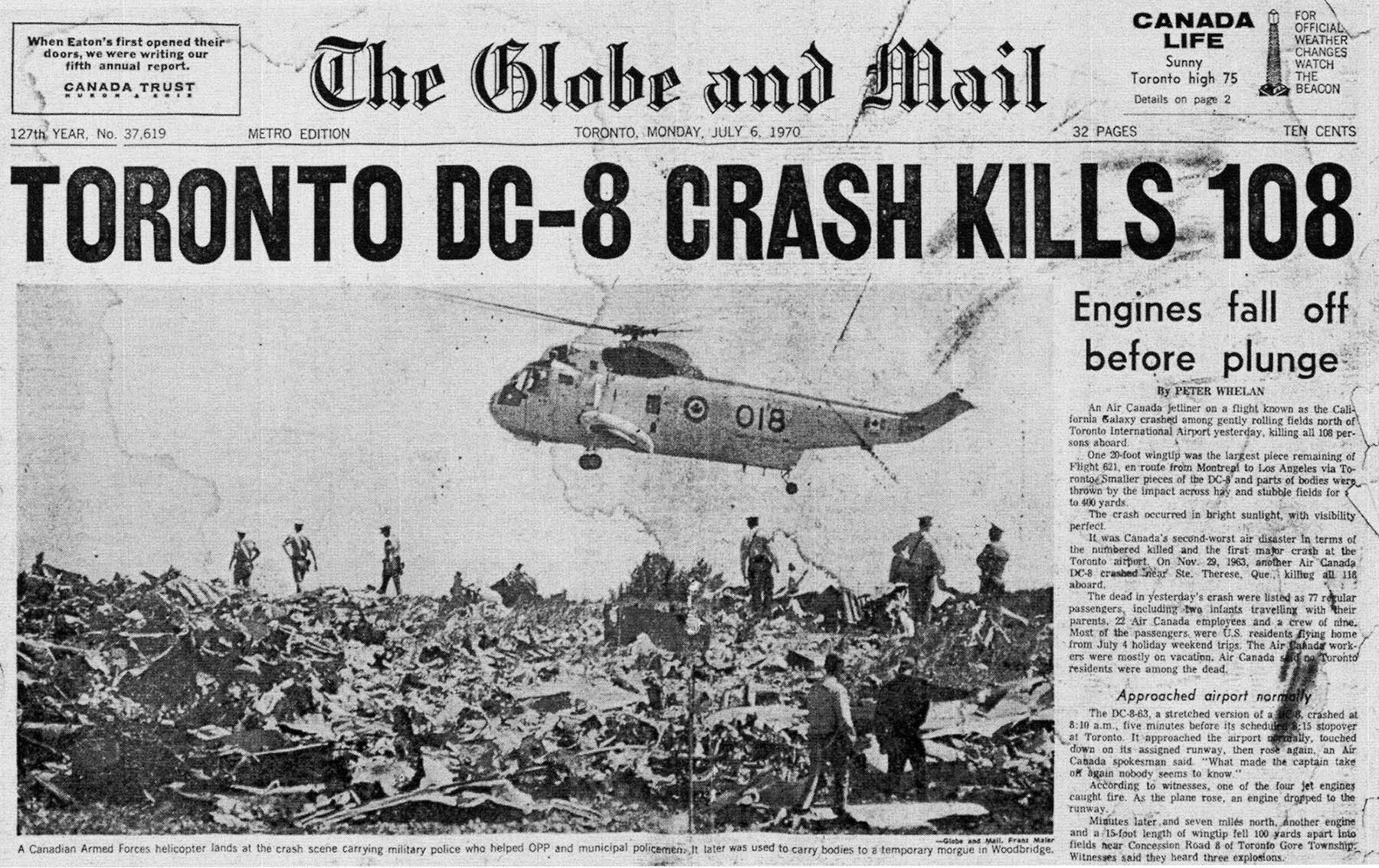Air Canada Flight 621, on a new DC-8, left Montreal en route to Toronto and then to Los Angeles. When the captain and first officer had flown together on previous flights, they disagreed on when to ‘arm’ or prepare the spoilers, which are the wing devices that reduce the lift and assist in braking. Neither of them liked the Air Canada policy to arm the spoilers at the start of the final approach because they thought arming the spoilers then might cause inadvertent activation of the spoilers. Both men had their ideas on when they should arm the spoilers.
The captain and first officer discussed when to arm the spoilers as the plane approached Toronto International Airport (now called Pearson International Airport). This time, the captain ordered, “All right. Give them to me on the flare1 [the landing stage that follows the final approach and precedes the touchdown. The plane’s nose rises and decreases the descent rate in the flare.].”
Power was reduced for the flare, and the captain ordered the first officer to arm the spoilers. On DC-8s, the spoilers were armed and deployed by the same lever. The first officer inadvertently deployed the spoilers, not merely arming them.2 The plane sank rapidly.
The captain applied full throttle to all four engines and pulled back on the control column. The nose came up as the plane continued to sink. The plane hit the runway and lost the number 4 engine and part of the lower wing plating. That damage caused fuel to escape and ignite. The two pilots retracted the spoilers and got the damaged plane back into the air to 3,100 feet. They wanted to circle for an emergency landing, but an explosion occurred on the right-wing. Six seconds later, a second explosion blew off the number 3 engine. Six and a half seconds later, a third explosion blew off a large section of the right-wing.3 The plane crashed into a ravine in a farmer’s field in Castlemore, now part of Brampton. All passengers and crew, a total of 109 people, died on Flight 621 (initial news reports stated that 108 people died, but the number was later revised to 109).
St. John Ambulance volunteers arrived at the crash scene within 20 minutes. As the only volunteers at the crash, they gave support and aid to the Ontario Provincial Police and the Department of Transport personnel who searched for and collected the human remains. St. John Ambulance personnel assisted in setting up a temporary morgue on what would typically be the ice surface at Woodbridge Arena. Upstairs, they set up a first aid station and rest area with beds for the personnel and the relatives and friends who came to identify the deceased. This facility operated for a week.
St. John Ambulance volunteers also assisted at a memorial service at Mount Pleasant Cemetery, where many victims were buried.
St. John Ambulance volunteer Douglas Webster recalled a terrible scene of body parts hanging on trees and clothes and other personal effects strewn over a square mile.4 Like other personnel at the scene, St. John volunteers were overwhelmed by the tragedy.
It was one of the grimmest assignments for St. John Ambulance. Air Canada Flight 621 was the second-worst air crash in Canadian history and the worst in the Greater Toronto Area and Pearson International Airport.
_______
1 Transcript of cockpit voice recorder https://tailstrike.com/database/5-july-1970-air-canada-621/
2 Dale, Daniel, 40 Years Later, a Memorial to GTA’s Worst Plane Crash, Toronto Star, July 2, 2010, https://www.thestar.com/news/gta/2010/07/02/40_years_later_a_memorial_to_gtas_worst_plane_crash.html
3 Aviation Safety Network database https://aviation-safety.net/database/record.php?id=19700705-0
4 Hammond, Harry, Yesteryears – A History of St. John Ambulance, p. 74, privately published by Harry Hammond
